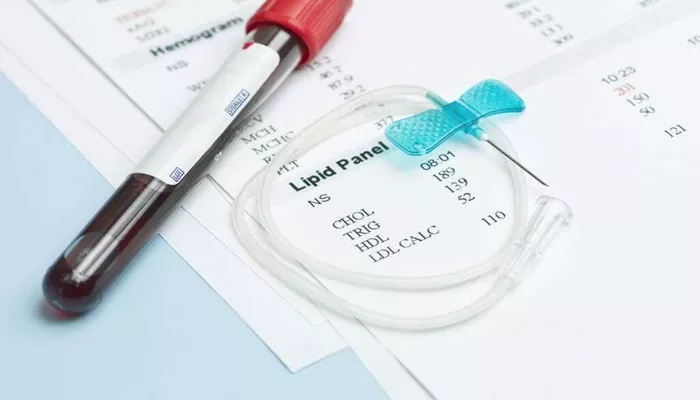Hyperlipidemia, characterized by elevated levels of lipids in the blood, is a significant risk factor for cardiovascular diseases, including coronary artery disease, stroke, and peripheral arterial disease.
Monitoring lipid levels through regular lipid panels is crucial for managing hyperlipidemia and mitigating these risks. This article delves into the optimal frequency for conducting lipid panels in patients with hyperlipidemia, considering various factors such as age, risk factors, and treatment goals.
Understanding Lipid Panels
Lipid panels, also known as lipid profiles, measure the levels of different types of lipids in the blood. A standard lipid panel typically includes:
Total Cholesterol: The overall amount of cholesterol in the blood.
Low-Density Lipoprotein (LDL) Cholesterol: Often referred to as “bad” cholesterol, high levels can lead to plaque buildup in arteries.
High-Density Lipoprotein (HDL) Cholesterol: Known as “good” cholesterol, it helps remove LDL cholesterol from the arteries.
Triglycerides: A type of fat in the blood, high levels can also contribute to atherosclerosis.
SEE ALSO: What Can Hyperlipidemia Cause?
Initial Assessment And Diagnosis
When a patient is first diagnosed with hyperlipidemia, a baseline lipid panel is essential. This initial test provides a reference point for evaluating the effectiveness of any interventions or treatments. For individuals without previous lipid abnormalities, the following guidelines are typically followed:
Adults Aged 20 and Over: It is recommended to have a lipid panel every 4 to 6 years as part of a regular health check-up.
This frequency may vary based on individual risk factors.
Children and Adolescents: Lipid screening should be performed once between ages 9 and 11 and again between ages 17 and 21. Earlier and more frequent screenings may be necessary for children with a family history of hyperlipidemia or early cardiovascular disease.
Frequency of Lipid Panels in Hyperlipidemia Management
General Recommendations
Once hyperlipidemia is diagnosed, the frequency of lipid panels depends on several factors, including the severity of the condition, the presence of other risk factors, and the treatment plan. Generally, the following schedule is recommended:
Every 4 to 6 Weeks: For patients starting a new lipid-lowering therapy, such as statins or lifestyle changes, lipid panels should be conducted every 4 to 6 weeks until the lipid levels reach the target range.
Every 3 to 12 Months: Once the lipid levels are stabilized and the patient is on a maintenance regimen, lipid panels can be performed every 3 to 12 months. The exact frequency within this range depends on the individual patient’s risk profile and the stability of their lipid levels.
High-Risk Patients
Patients at high risk for cardiovascular events, including those with a history of cardiovascular disease, diabetes, or multiple risk factors, may require more frequent monitoring:
Every 3 to 6 Months: For high-risk patients, more frequent lipid panels (every 3 to 6 months) are recommended to ensure that lipid levels remain within the target range and to promptly identify any necessary adjustments in therapy.
Patients with Familial Hyperlipidemia
Familial hyperlipidemia is a genetic disorder characterized by extremely high levels of cholesterol. These patients often require more aggressive management and frequent monitoring:
Every 3 to 6 Months: Similar to other high-risk patients, those with familial hyperlipidemia should have lipid panels every 3 to 6 months to closely monitor their lipid levels and adjust treatment as needed.
Factors Influencing Lipid Panel Frequency
Age and Gender
Men Aged 45 and Over, Women Aged 55 and Over: As age is a significant risk factor for cardiovascular disease, lipid panels may be recommended more frequently in older adults, even if they are not high-risk.
Lifestyle and Dietary Habits
Lifestyle Changes: Patients making significant lifestyle changes, such as adopting a new diet or exercise regimen, may need more frequent lipid panels to assess the impact of these changes on their lipid levels.
Dietary Interventions: For patients following a specific dietary plan to lower cholesterol, lipid panels may be conducted every 3 to 6 months to evaluate effectiveness.
Coexisting Conditions
Diabetes: Patients with diabetes are at a higher risk for cardiovascular diseases, necessitating more frequent lipid panels (every 3 to 6 months).
Hypertension: Similar to diabetes, hypertension increases cardiovascular risk, and patients may require lipid panels every 3 to 6 months.
Medication And Treatment Adjustments
Medication Changes: Whenever there is a change in lipid-lowering medication, a follow-up lipid panel is necessary after 4 to 6 weeks to assess the effectiveness of the new treatment.
Side Effects and Adverse Reactions: If a patient experiences side effects from lipid-lowering medications, more frequent lipid panels may be needed to monitor the impact on lipid levels and overall health.
Conclusion
Regular lipid panel testing is essential for managing hyperlipidemia effectively and reducing the risk of cardiovascular diseases. The frequency of these tests should be tailored to the individual patient based on their risk factors, treatment plan, and response to therapy. For most patients with hyperlipidemia, lipid panels every 3 to 12 months are adequate once lipid levels are stabilized. However, high-risk patients and those undergoing treatment adjustments may require more frequent monitoring.

